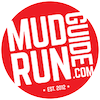
I chose the title for the article knowing well in advance there will be a string of comments on Facebook that says things like “No! Who cares!?!” Just like most posts, you should probably read the article first. So, should you care how much you can lift if you are an OCR athlete?
The answer, which may be surprising to some people, is yes. Not because most lifts are sport specific to OCR but because having strength training goals will produce better results for any athlete. Whether your goal is overall fitness improvement, weight loss or competitive OCR, specific goals will help produce accurate results. Many people will enter the New Year with a goal saying I want to be stronger or faster, without being precise about their goal. If you go into this New Year and this offseason saying I want to increase my squat by X lbs, my deadlift by Y lbs and my clean by Z lbs, you provide yourself with a clear goal. With this goal, it is easy to measure progress and track success or failure.
OCR is all about relative strength or the ability to move your body through obstacles. So increasing your ability to lift certain weights in different exercises will increase your relative strength in relation to bodyweight, as long as your weight remains relatively stable. By continuing to eat healthy, you can maintain stable body weight while increasing strength without a significant increase in weight.
While there are exercises that correlate stronger with OCR training like ability to do muscle ups, pull ups, weighted lunges and squats, the point of this article is that you should have a strength goal for the offseason. If you are just going to the gym or your training area without specific goals in mind, you are probably not going to get as good results. Specific goals, even for exercises which may just be supplemental, help overall strength training. If you do not know where to start when picking a good strength goal, check out this chart on my Strength & Speed criteria page. It has a breakdown by gender, by bodyweight and by lift. This provides specific goals that you can use to measure progress.
You may have seen this doing intervals during your speed workouts. If you are setting a goal of running a 1-mile repeat in
7 minutes and 5 seconds for every repeat of your workout, the specific goal will make you more likely to push harder rather than just saying I want to be faster. The same thing goes for strength training, setting a specific goal will help produce a specific goal rather than just saying I want to be stronger.
This offseason, while most areas are not holding OCRs, set some specific strength training goals whether that is hitting ten reps of an exercise with a certain weight or hitting a new PR in unbroken pull-ups. The specific goal will also give you a good short-term goal to focus on while you wait for OCR season to pick back up. Finally, do not forget to tag your photos and videos with “@Mud Run Guide” and “@Strength & Speed” so people know that you are taking training seriously.
Photo Credits:
Cody Peyton deadlift Photo courtesy of Kara Scott.
Nathan Palmer back photos courtesy of Jack & Sarah Reeves.
Matt Willis photo courtesy of random guy in the gym.
Randi Lackey photo courtesy of Oliver Lackey.
Christina “Honey Badger” Armstrong photo courtesy of Melissa Nasits.
Disclaimer: The viewpoints expressed by the authors do not necessarily reflect the opinions, viewpoints and official policies of Mud Run Guide LLC, or their staff. The comments posted on this Website are solely the opinions of the posters.






Leave A Comment